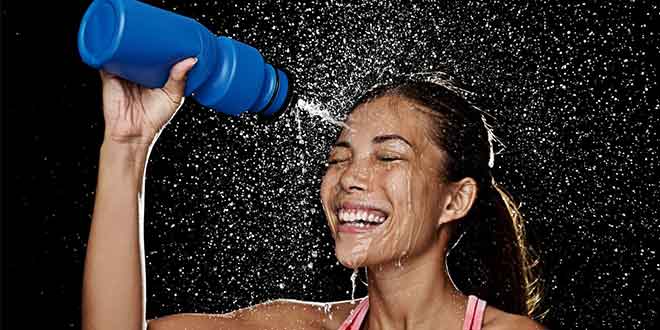
Ways to Stay Hydrated this Summer
As summer temperature rises, the most important thing is to stay hydrated. Unfortunately, the defining attributes of summertime; hot temperatures, humidity and direct sunlight are a perfect recipe for dehydration.
Hence, it’s very important to focus on our fluids all day long after all; water is the most essential nutrient our system needs. Our bodies are about 75 percent water and blood is nearly 80 percent water, so it is necessary to replenish what is lost every day.
Follow the easy tips to keep yourself hydrated this summer:
- Drink enough water to prevent thirst.
- Avoid smoking the day before or the day of a long exercise
- Consider all fluids, including tea, coffee, juices, milk and soups. The amount of caffeine in tea and coffee does not discount the fluid in them, even if they have a slight diuretic effect.
- Eat at least five cups of fruits and vegetables per day for optimum health, as they all contain various levels of water and the all-important nutrient potassium.
- You can also replace fluid and sodium losses with watery foods that contain salt and potassium, such as soup and vegetable juices.
- For long hikes, when you’ll need food, dried fruit and nut mixtures contain high amounts of potassium, sodium, protein, carbs and calories though continue to drink plenty of water.
Who says you can’t have your water and eat it, too? Water’s not only available to us in the form of liquids we drink but also within the food we eat as well. There are plenty of summer-friendly fruits and veggies that help you keeping yourself hydrated so the next time you’re feeling thirsty, pile these on your plate.
Watermelon
Based on its name, it’s no surprise this fruit is made up of 92 percent water. Each juicy bite has significant levels of vitamins A, B6 and C, lots of lycopene, antioxidants and amino acids. There’s even a modest amount of potassium. While this water-filled fruit is working to keep you hydrated, it’s also providing you with other key vitamins and minerals.
Strawberries
Even without the shortcake, strawberries are a sweet treat perfect for staying hydrated. These in-season fruits are 91% water and contain folate and vitamin C, which can contribute significantly towards your overall fluid intake. You can have them as afternoon snacks or add them to baked foods and salads.
Cucumbers
The flesh of cucumbers is primarily composed of water but also contains vitamin C and caffeic acid, a cucumber can produce similar hydration levels to twice the volume of water. It also contains almost ideal levels of calcium and magnesium, along with potassium, sodium and other minerals.
Yogurt
Surprisingly, fruits and vegetables aren’t the only hydrating foods. Yogurt has got protein, electrolytes, calcium and it is 85 percent liquid. You can blend yogurt with apples, peaches and strawberries; foods all high in water content to make a thirst-quenching smoothie.
Oranges
Oranges are made up of 79 percent water, making the fruit the perfect water-packed snack that you can take anywhere. They are sweet and packed with more than 100 percent of the daily recommended value for vitamin C. That’s more than enough to negate the annoyance of peeling!
Tomatoes
Tomatoes are composed of about 95 percent water. That means that along with signature sweetness comes enough moisture to cut back higher-calorie condiments on your sandwich. Tomatoes are full of antioxidants and are a great vegetable that can be consumed all year around.
Note to yourself: To measure your hydration status, examine the color of your urine. If you’re hydrated, your urine will appear to be a very pale yellow and almost clear. If your urine is much darker, like the color of tea or apple juice, this means that your body is dehydrated.

